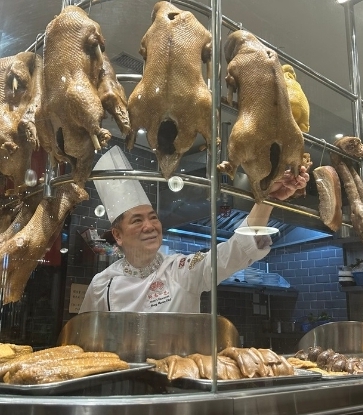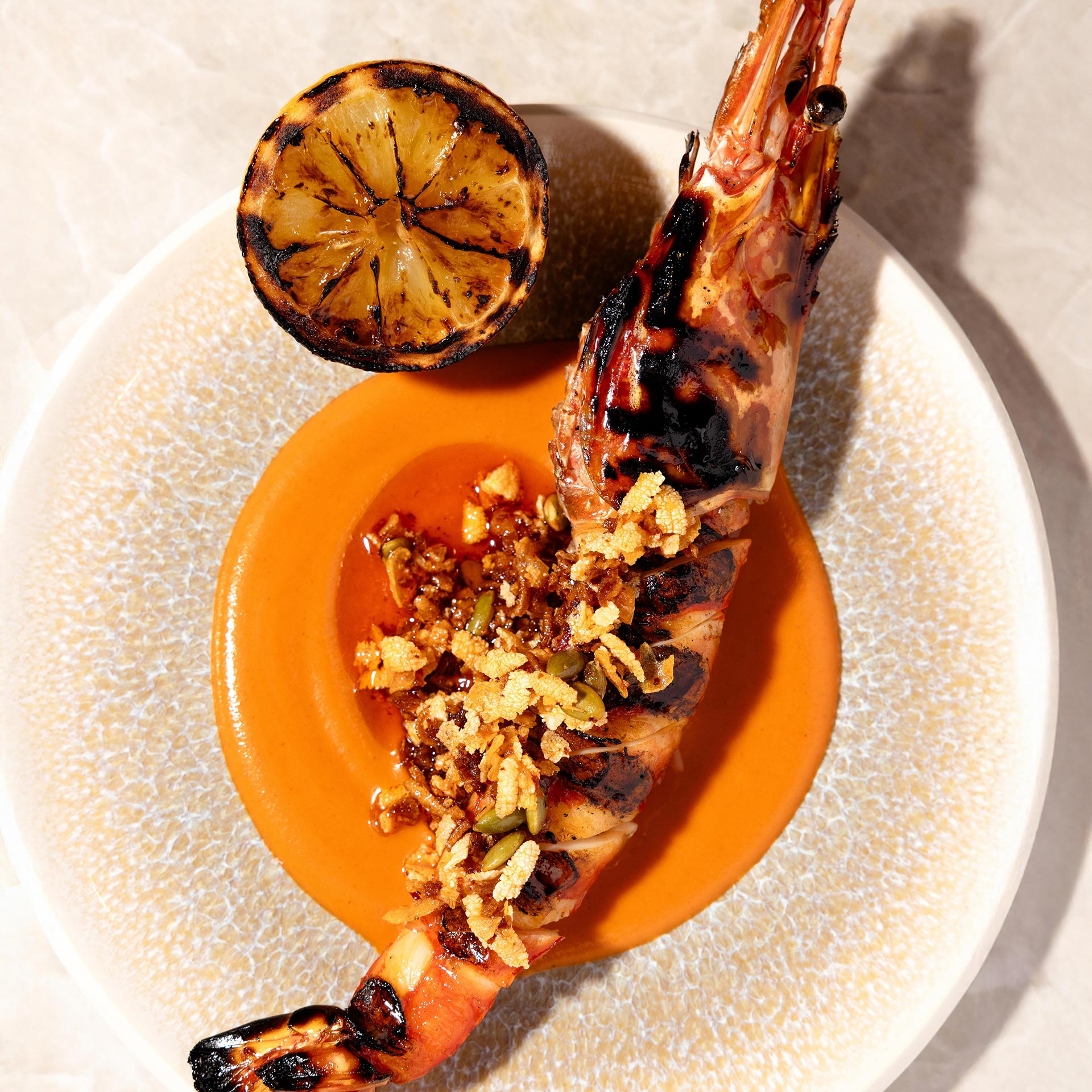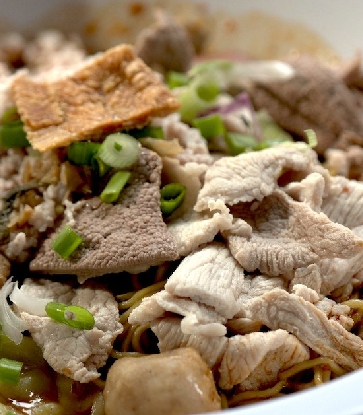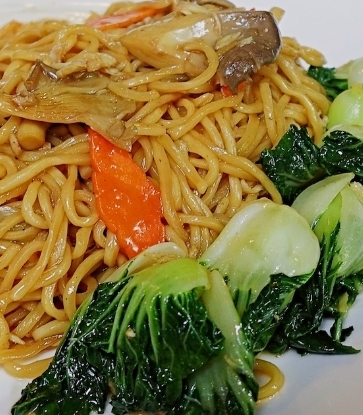Planning your visit to Hong Kong? In addition to booking MICHELIN-starred dim sum fairs and creative modern Chinese fine dining, one shouldn’t forget about the soul-soothing and wallet-saving noodles of Hong Kong.
It’s impossible to list out every single bowl of amazing noodles you should try in town, but here are seven classic Cantonese noodles to start with – and where to try them.
Wonton Noodles
Wonton noodles are arguably the most iconic of all Hong Kong noodles.It’s said that wonton – pork dumplings in clear broth – was first documented as a dish in the north before the Cantonese were inspired and created their style of wonton noodles in the 1920s. The famous dumplings we all know now are made with minced shrimp and pork encased in thin egg wrappers.
The umami broth – simmered with pork bones, shrimp and dried flatfish – as well as the bouncy bamboo egg noodles, are also an important part of a bowl of good wonton noodles.
Ho To Tai, Lau Sum Kee, Ho Hung Kee and Mak Man Kee make some of the city’s best wonton noodles – either wonton soup noodles or wonton on toss noodles.
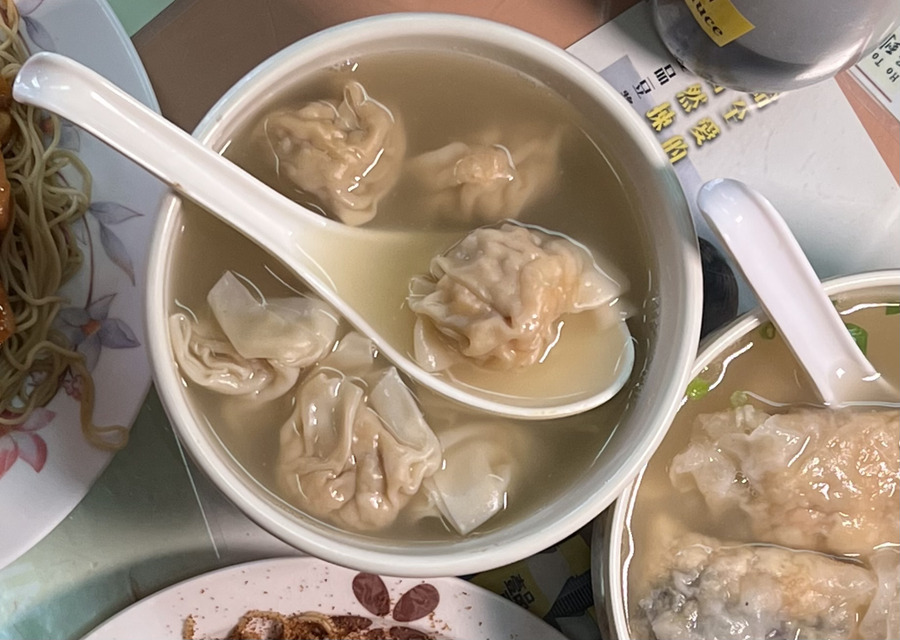
Nam Yu Pork Knuckle Noodles
Braised pork knuckle noodles is also a Cantonese classic.Lesser known amongst travellers, nam yu braised pork knuckle noodles are jam-packed with the sweetness and the wine flavours from, well, the nam yu. Nam yu is a red fermented soy beancurd made with yam, Chinese yellow wine and red fermented rice. As the pork knuckles are slowly cooked in spices and nam yu sauce for hours, they become immensely tender.

Beef Brisket Noodles
It isn’t hyperbole to say Hong Kongers take their beef brisket noodles seriously.While briskets refer to the chest cut of meat, most beef brisket noodles shop separates the cut further into briskets, boneless short ribs, inside skirt briskets, and outside skirt briskets. The menu would also include an assortment of beef offal, from tripes to tendon as well as beef balls.
Everyone has their favourite cuts in different restaurants.
A visit to Eight Treasures will satisfy all your beefy needs. A sign outside tells you if the special cuts are sold out for the day. But even if they do, the eatery’s basic brisket noodles in its heavenly broth -- simmered with eight herbs and beef bones for over 10 hours -- wouldn’t disappoint.
Other places to get a MICHELIN-recommended bowl of beef brisket noodles include Sister Wah Shop and Kau Kee.
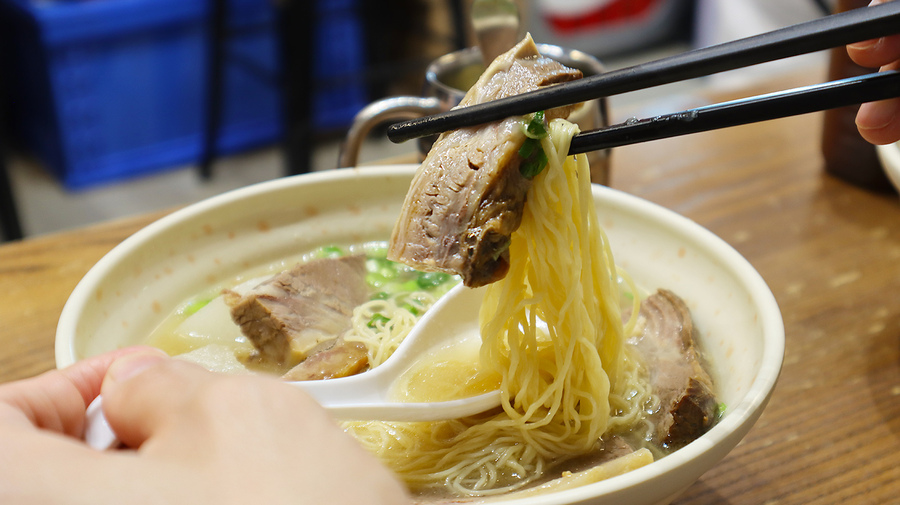
Roast Goose Noodles
While char siu might be the most famous Cantonese-style roast internationally, roast goose is considered the most prized option in a Cantonese barbecue shop.Roast goose is loved for its rich flavours and firm meat. To make a Cantonese roast goose, one has to remove all the innards carefully through a small cut. The goose is then inflated with air, then marinated in seasonings and spices before boiling water was poured repeatedly on its surface.
It’ll then be air-dried before its skin is coated in a honey-water mixture. The goose will then be roasted in an oven till its skin is perfectly crispy and its meat absorbs all the flavours – yet not long enough to lose too much of its moisture and fat.
The best-supporting star of the rich roast goose is a bowl of plain lai fun, a type of semi-translucent noodles made with rice powder.
If you don’t mind chowing down noodles in 30 minutes and rubbing shoulders with fellow diners, Yat Lok’s crispy and fatty roast goose noodles are an attraction in their own right when visiting Hong Kong. You could also order the roast goose toss noodles if you don’t want to soak your roast goose in soup.
Another MICHELIN destinations for roasted goose include Tin Hung in Yuen Long.

Doggy Noodles
Named after the shape of the noodles – short and chubby like a dog’s tail, doggy noodles were a street food staple in the 50s and 60s.Made of rice flour, the dough is roughly hand-rolled and then cut into boiling water. The noodles are often served with a mix of mushrooms, dried shrimp, deep-fried pork lard and pork cracklings.
Supreme Soy Sauce Chow Mein
There is no other place to enjoy supreme soy sauce chow mein, stir-fried noodles, in a traditional congee shop in Hong Kong.The simple noodles are often wok-fried with thin slices of yellow chives, scallions and bean sprouts.
It’s served as a side dish to your congee. Eat it by itself or dip it in the congee, there is no rule to how you consume chow mein
Trusty Congee King in Wan Chai offers a chow mein so rich in wok hey (breath of wok) that it’s slightly crispy – in addition to all its flavourful fish broth congee offerings.

Fung Shing Dumpling Noodles
Want to venture outside the usual noodle options? Fung Shing dumplings – named after a city in Shunde, Guangdong province, is the overshadowed but delicious cousin of wonton noodles.In addition to the usual ingredients in a Cantonese wonton, Fung Shing dumplings also have finely chopped slices of woodear mushrooms, bamboo shoots and shiitake mushrooms.






